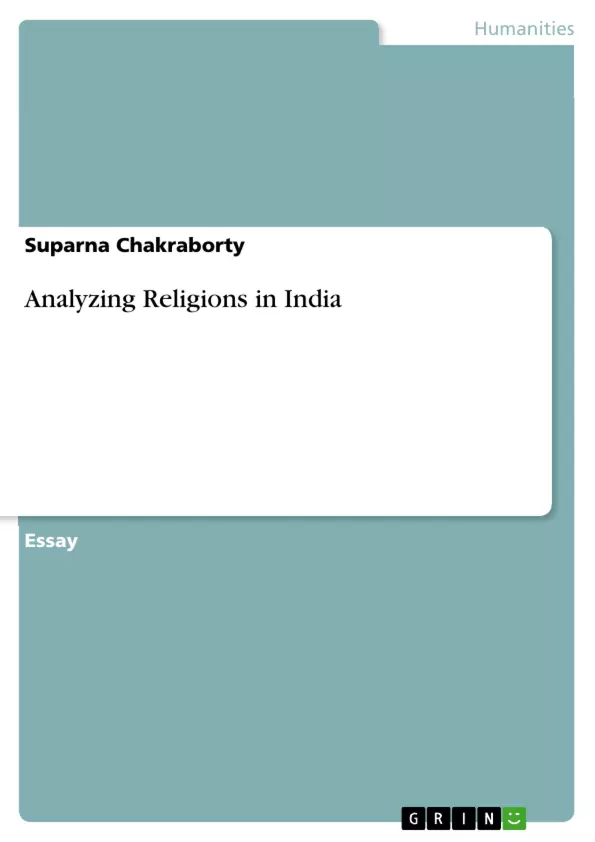This paper wants to portray the changing nature of religion in India which causes nothing but segregation among people in the period of the colonial to postcolonial era. Hindu the predominating religion in India and the attempt to make India a Hindu country many times caused major harm to other communities.
After colonial domination, significantly in contemporary times (last 6 to 7 years), religiosity among people took a horrendous form in India. The growing intolerance for a hollow ideology like religion makes the country an uncomfortable habitation for minorities. The Media sphere is also largely influenced and subservient to religious notions. Religion is an excellent apparatus for political gain. Over time the salience of religion transforms public life and became highly politicized.
Inhaltsverzeichnis (Table of Contents)
- Introduction
- Section 1
- 1.1 Emergence of the idea of "Hindu" in colonial and postcolonial periods:
- 1.2 Transformation of religious salience from colonial to postcolonial era:
- Section 2
- 2.1 Emergence of Hindutva and its impact on public life
- 2.2 The Media and its influence on Religion in the era of digitalization
- 2.3 The Role of Electoral Politics in the transformation of religion in public life
- Conclusion
Zielsetzung und Themenschwerpunkte (Objectives and Key Themes)
This paper examines the evolution of religious salience in public life in India, exploring the transformative impact of colonial rule, postcolonial independence, and the rise of market liberalization, media digitalization, and electoral democracy. It aims to shed light on the dynamic relationship between religion and political power, particularly in the context of a diverse and culturally complex nation.
- The emergence and evolution of the concept of "Hindu" in colonial and postcolonial India.
- The influence of religious movements and ideologies on public life and national identity.
- The role of media and digitalization in shaping and influencing religious narratives and practices.
- The impact of electoral politics and the rise of religious nationalism on the political landscape.
- The challenges and implications of religious tensions and the rise of intolerance in contemporary India.
Zusammenfassung der Kapitel (Chapter Summaries)
The introduction sets the stage by highlighting the enduring influence of religion in Indian public life, from precolonial times to the present. The paper delves into the rise of religious nationalism, the role of media in shaping religious narratives, and the increasing politicization of religious sentiments in contemporary India.
Section 1 focuses on the emergence of the concept of "Hindu" during the colonial era. It explores how the British colonial administration leveraged religious divisions to strengthen their rule, while simultaneously contributing to the growth of Hindu nationalism. This section also examines the transformation of religious salience in the postcolonial period, tracing the influence of nationalist movements, religious leaders, and organizations like the Arya Samaj on the shaping of Hindu identity.
Section 2 further explores the impact of Hindutva on public life, delving into the rise of religious extremism and the role of media in propagating religious ideologies in the era of digitalization. The section analyzes how electoral politics and the emergence of religious nationalism have influenced the political landscape, highlighting the challenges and implications of these trends for the future of Indian society.
Schlüsselwörter (Keywords)
The paper focuses on the key concepts of religion, politics, nationalism, colonialism, postcolonialism, identity, media, digitalization, electoral democracy, and religious intolerance in the context of India. It examines the intersection of these themes and their implications for the social, cultural, and political landscape of the country.
- Quote paper
- Suparna Chakraborty (Author), 2019, Analyzing Religions in India, Munich, GRIN Verlag, https://www.grin.com/document/1329925



